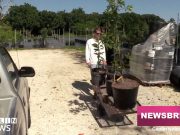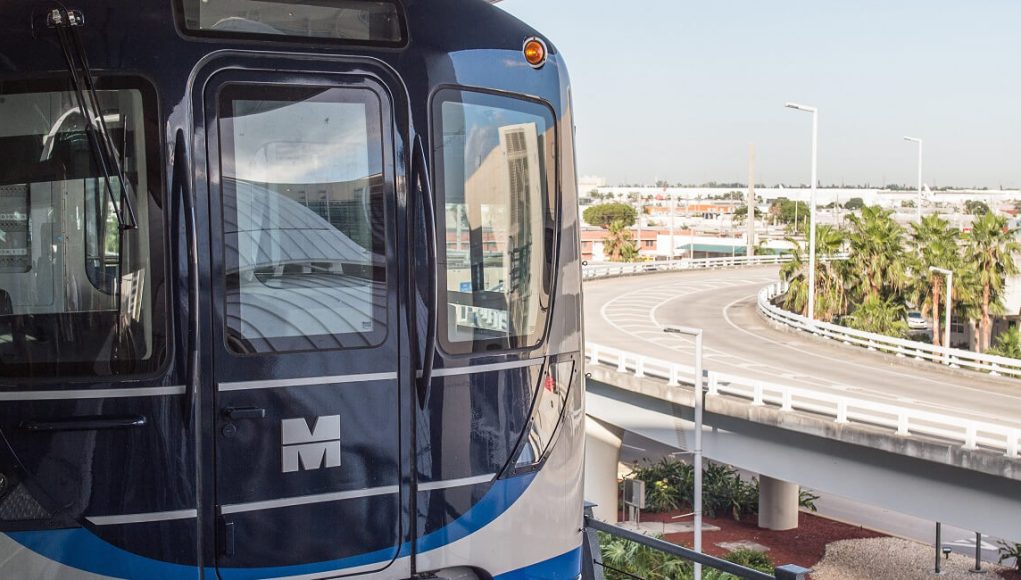Like many others, Rafael Vega immigrated to the United States to work.
After he left Cuba last year and arrived in Miami, he found multiple job opportunities. Although he was satisfied with his first construction job, the dependence he had on family members for transportation forced him to look for other opportunities closer to his house.
“My brother used to drive me there, but that didn’t always work out,” Vega said. “I had to find another job.”
Now, Vega has found a job as a clerk in a supermarket only a five-minute drive from his house. But, without a car or bus routes to take him to his workplace, those five minutes translate into 40 minutes on foot.
Back in 2002, the county enacted a half-penny sales tax to improve mass transportation. The idea was to open more bus routes, improve Metrorail and generally make it easier for people to get around.
But it hasn’t worked very well.
The nonprofit organization Transit Alliance Miami recently released its 2023 mobility scorecard and gave Miami-Dade County an ‘F’ in walking, cycling and trolley services. While this score reflects the high rates of pedestrian and bike casualties, immigrants like Vega who find commuting an obstacle in their work life, indicate that the lack of public transportation routes is at least partially the cause of these casualties.
And though there are proposals to improve mass transportation in Miami-Dade, such as the Better Bus Project, Transit Alliance policy manager Mark Merwitzer does not see this project as a direct solution to the mobility scorecard.
“It’s supposed to be viewed as a holistic view of our transit system,” Merwitzer said of the 2023 mobility scorecard. “We wanted to show scores that reflect all aspects, ranging from getting to and from the transit stop, how safe it is to walk to the transit stop, how on time your bus is, and in general, what it’s like to get around in Miami Dade County without a car.”
According to the 2023 mobility scoreboard, buses are on time only 32.4% of the time, they are 2 to 5 minutes late 21.8% of the time, 5 to 10 minutes late 19.7% of the time, 10 to 30 minutes late 17.9% of the time and they are more than 30 minutes late 2.5% of the time.
These inconsistent bus schedules can affect the punctuality of workers like Vega – and that doesn’t make employers happy. So, he chooses to use public transportation only when there’s no pressure of punctuality, like when going grocery shopping or to the coin laundry.
Vega said that although public transportation is highly deteriorated in Cuba, many areas were more walkable.
But in South Florida, walking can be more than just inconvenient.
A 2022 study by smartgrowthamerica.org reported that Florida was the second deadliest state for pedestrians. The Miami-Fort Lauderdale-Pompano Beach area ranked 14 in the United States for most likely to be killed by a driver.
Nicholas Durán, the advocacy manager for Transit Alliance, told WLRN this June that intersections with high rates of pedestrian and bike casualties affect not only pedestrians and bicyclists, but also drivers.
“It’s just dangerous all around and these are ultimately design flaws,” Durán said.

With no bus routes that could take him to his workplace and as a solution to walking 40 minutes every morning, Vega now commutes by bicycle. This transportation method helps him get to his job in 10 minutes, but it’s not always reliable.
“The worst problem about going to work on a bicycle is when it’s raining. If it’s raining, you have to wait and get there late,” Vega said. “I have to ask someone else, for example, my family members, to drive me to work those days.”
Aside from the intense sun and rainy days, Vega doesn’t trust the bikeways.
The 2023 mobility scoreboard segment about bicycle crashes indicates that the majority of cases occur along main corridors and intersections. The report explains: “Drivers often look towards oncoming traffic and may initiate a turn before looking for pedestrians coming from the other direction on the sidewalk.”
This situation is what Vega wants to prevent.
“What can be dangerous are the traffic lights,” Vega said. “I prefer going through the houses and not taking the bikeway because there are times when cars don’t stop or are not careful with bikes.”
To help residents like Vega connect to more job and service opportunities, the Transit Alliance’s Better Bus Project, a plan led by riders and the community, seeks to redesign Miami-Dade County’s bus network to increase bus routes, create better connections and recover ridership.
The project already has multiple proposed bus network maps. A pilot launch is set to be released in November.
“The maps we got from dozens of information sessions, community listening sessions we conducted a couple of years ago,” Merwitzer said. “This has been years in the making and this map was approved unanimously by the County Commission.”
This draft map of Miami Dade’s bus network reflects alternative routes proposed by the Better Bus Project with data collected from information and community listening sessions.
Until then, workers like Vega will still struggle to find opportunities for a full-time job.
“Right now, the bicycle is fine because I’m close to my job,” Vega said. “But someone got me an eight-hour job I can’t accept because I don’t have a car and it’s too far to go by bicycle.”

































